Horse riding is a competitive sport that is practiced in almost all parts of the world. Because of its global reach, several distinct styles of riding have emerged. Among them are Western and English riding. And a question we get all the time here at Equestrian Boots and Bridles is “what is the difference between Western and English riding?”
Western and English are probably the most popular riding styles. They hail from North America (putting the ‘West’ in ‘Western’!) and England / Europe respectively, but both styles are now ridden all over the world.
Let me start by saying there are actually plenty of similarities between these styles of riding. However, here I’ll share with you the key difference between Western and English riding.
Want to jump to a particular section?
Western Horseback Riding
The most distinctive feature of Western horse riding is the saddle. Western saddles are basically working saddles. They were designed to meet the needs of Western cowboys, who used to spend most of their time is in the saddle. This is why Western horse saddles were designed with comfort in mind.
How are Western saddles more comfortable? Basically, the weight of the horse rider is distributed evenly on the back of a horse by using a Western saddle. Western saddles are suitable for long trail rides that can span many hours, or even days.
The horn is one of the most dominant features of a Western saddle. The horn is a feature of the saddle that was used by cowboys to wrap their rope around. This rope would be use to catch cattle, tie them up, or even drag things where necessary. The horn is located in front of the saddle. The Western saddle also comes with an option to attach stirrups.

The size of a Western saddle is also considerably larger than that of an English saddle. The Western saddle is also heavier as compared to an English saddle, which provides greater stability to the rider.
Another main feature of Western riding is the number of different bits that are used in it. Some of the common bits that are used in Western riding are snaffle bits, curb bits and hackamores bits.
The reins used in Western riding are split, and generally you would only use one hand to hold them. Neck reining is used by the rider to control the movements of a horse.
If you’re thinking about trying Western riding, have a look at my top 10 Western Horseback Riding Tips for Beginners!
Western Horses
A big part of Western riding is the long trail rides that cowboys would do. So the horses involved in Western riding are usually sturdy and compact, capable of covering large distances.
That said, Western horses also need to be able to put on a burst of speed here and there for herding. The American Quarter Horse is one that has been bred specifically for that purpose.

Some horses were specifically bred for Western style riding, but really nowadays most horses will be able to do plenty of Western work, and find something they can excel in – no matter their breed.
Western Gaits
There are three gaits typically used in Western riding. From slowest to fastest they are:
- Walk. There is no difference between Western and English riding for this one: a walk is a walk!
- Jog. A jog is a smooth gait, faster than a walk, and used to herd cattle.
- Lope. A lope is faster again than a jog, but is still a fairly relaxed and smooth pace.
Western Competitions
Within Western riding there are quite a few sub-disciplines you can try, each with their own competition. These most commonly include:
- Western Pleasure. This involves walking, jogging and loping your horse with other horses around an arena.
- Reining. This is often thought of as the dressage (see below in English competitions) of the Western world. It requires riders to perform a set of manoeuvres, including stops, spins and circles.
- Rodeo. This is what everyone thinks of when they think of Western riding. Rodeo is actually thought of as its own type of competition, with plenty of individual events you can compete in, including roping, barrel racing and rough stock riding.
Western Attire
Let’s talk about the attire of western horse riders. This is another highly distinctive feature of the style. I think that the most important part of their attire that is the Western hat or Cowboy hat.
Other elements of their attire include jeans, Western style boots, and a shirt. Some Western riders also wear a helmet, which is something I highly recommend.

Generally Western outfits will be full of colour and personality, all while maintaining that cowboy-style look. For more information on what to wear when you’re riding Western, have a look at my guide to the different attires that match different styles, and scroll to the Western section!
English Horseback Riding
So then, on to English horse riding. I would say that it is the most popular riding style.
The basic feature of English riding is the flat saddle. There is no deep seat in an English saddle. As compared to Western saddles, English saddles also lack a horn. The size of an English saddle is small, and it’s very light as compared to a Western saddle.
All of these English saddle features give you more freedom and mobility, and also change your posture. The smaller size and shallower seat allow you to respond appropriately when your horse jumps (in hunter / jumper and eventing disciplines) and bend down (in polo).
Additionally, in English riding, riders hold their reins using both hands.
There are some specific types of bits used in English riding. These bits are known as the Pelham bit and the Weymouth bridle. English bits usually use two sets of reins. All of this means that riders have more contact with their horse in English riding.
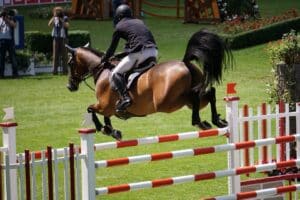
I find that in English riding, ankle mobility is super important. Have a read of my tips on keeping your heels down here!
English Horses
Horses that are used for English riding are generally tall and have long legs. They are suitable for jumping and for covering long distances quickly.
A good example of this kind of horse is the thoroughbred.
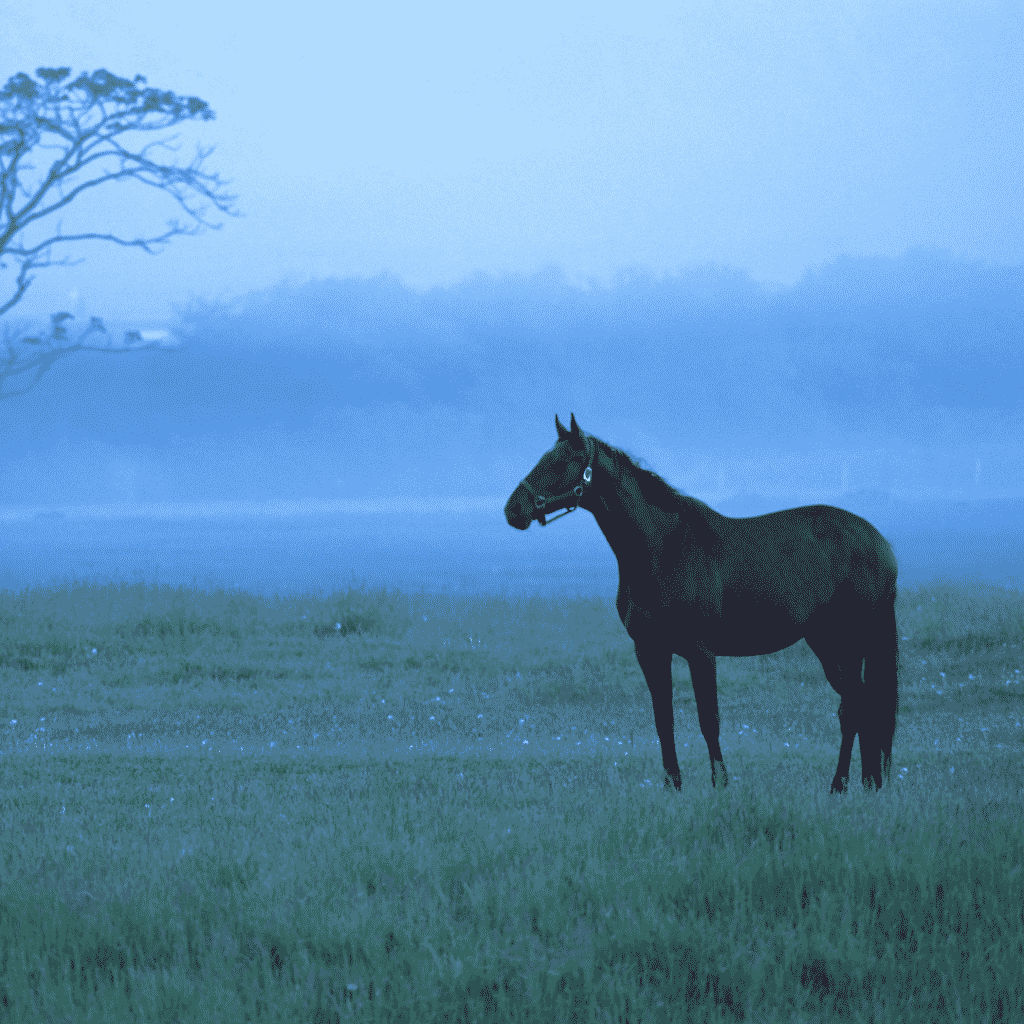
It is worth noting though that a number of horse breeds are very versatile, and can ride both English and Western with ease. Breeds like Clydesdales, American Paint Horses and Morgans are just a few examples.
English Gaits
The gaits used in English are actually very similar to the Western ones described above. Really, the difference between Western and English riding gaits is just the name:
- Walk. Again, there’s no difference between Western and English riding on this one. This is the slowest gait.
- Trot. A trot is the equivalent to the Western jog. However, a trot can be a little faster, and the rider will usually post; i.e. rise up and down with the horse’s gait.
- Canter. This is the fastest gait in English riding, and is the equivalent to the lope.
English Competitions
The types of English competitions you might have access to will differ depending on where you are in the world. For example, in Australia there’s a competition called ‘campdrafting’ which involves herding (usually associated with Western riding) but using an English saddle. Here are some of the more common competitions, held the world over:
- Dressage. Dressage actually means “training”, when translated from French to English. In competition, the horse must demonstrate quiet and calm obedience while performing a series of manoeuvres.
- Racing. Most horse races fall broadly within the English discipline, because of the tack used. Who knew!
- Polo. A team sport (one of the oldest in the world!) where players use a long handled mallet to hit a ball through the opposing team’s goal, all while mounted.
- Show Jumping. This is a timed jumping event, where participants are scored on how quickly they complete the jumps in the course, and how many (if any) they knock down.
- Eventing. Eventing is a combination of dressage, cross country jumping and show jumping which is held over three days.
English Riding Attire
English attire is generally more formal than Western attire. Its colour palette tends to favour monochrome and neutral tones.
Critically, in English you should be wearing a helmet, or on rare occasions a Top Hat. You would also wear a fitted jacket, tall boots, a shirt and breeches.

There are other optional pieces you can add to your look like gloves.
If you’re interested, have a look at my guide to riding attire, and scroll through the different English sections.
Conclusion: The Difference Between Western and English Riding
In short, the basic difference between Western and English riding is the difference in the equipment they implement. In my view, it’s the English vs Western saddle that really distinguishes them.
Apart from the equipment, there is also a little bit difference in the attire, the breeds of horses and the general physical styles of the riders.
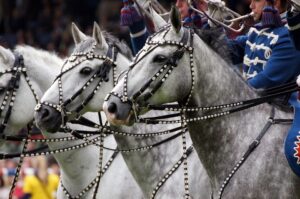
If you’re interested in learning about my preferences on the difference between Western and English riding, I wrote a whole post about which one is my favourite that you can check out.
I would also highly recommend having a look at the Rider’s Gear and Apparel page if you want to know more about what’s required for each of the different competitions I talked about in this post.
Finally, if you’ve still got more questions about the difference between Western and English riding styles, feel free to ask me below in the comments! I love hearing from you.
Happy riding!
Liked this post on the difference between Western and English riding? Why not pin it!
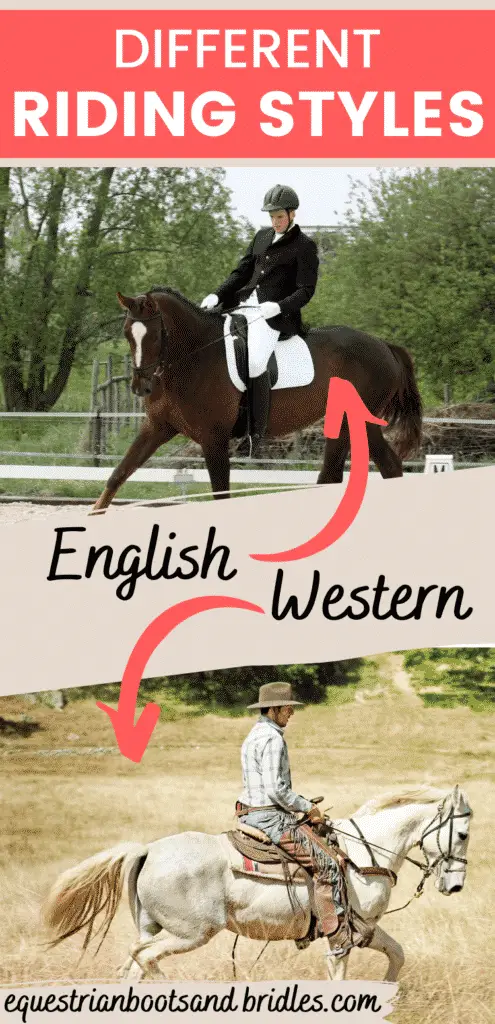

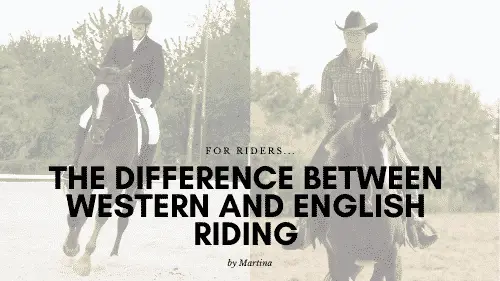
I hadn’t considered that there could be a few differences between Western and English riding. That being said, it’s good to know that both of them can include a helmet, even though it’s like a hunting cap for English. To be honest, I’m kind of interested in learning about these helmets. I’m curious to learn how they differ from other helmet types, like ones used for bike riding and for motorcycles.
Hey Taylor,
I’m glad you liked the post. There is a considerable difference between the attire of horse riders and I’ll soon write a separate blog post on this topic. Keep following Equestrian Boots and Bridles to stay updated. Thanks
Sophie
I enjoyed learning the differences between western and English saddles, i didn’t realize there was such a huge difference. it makes sense for the English one to not have the horn because they won’t be going out rounding up cattle. I think i prefer the western attire as it is much more comfortable and a lot less formal than the English.
Hey Lisa,
I don’t know, breeches are pretty much like leggings! I almost prefer them to jeans haha
Martina
Ah, this is very good because I didn’t really know the difference between the ways that they usually ride and although I just found a hobby in riding horses, I see it myself as an art. What you have mentioned here is very nice and I’m happy to learn all this. Thank you very much for all the info.
Hi John, no problem – happy to help!
Hello there thanks a lot for sharing this beautiful piece of information here with us. I must say i really did enjoyed going through your review as it contains valuable informations one needs to be aware of. I do not know much about horse riding but this has just summed it all up for me
My exposure to horse riding has been more the work/ranch related riding. Being able to ride and participate in events requires more training, practice and skills that I have acquired. In Western riding, we were aware of the different equipment needed for the work we were doing.
You mentioned the need for ankle mobility in English style riding, so this would require different style boots?
With this being about pleasure riding, are any of the parts of the equipment interchanged? Like the Eastern saddle with the split reins? Thanks Sami
Hi Sami! Thanks for your questions. Yes, typically in English riding, the boots are smaller, more form fitting and will have give around the ankles (either ankle-height boots or have laces around that area). Some tougher leather English boots, however, are stiffer around the ankle so if you struggle to keep your heel down, you’ll probably want to steer clear. Here’s a really good post breaking down everything you could hope to know about riding boots: The Ultimate Guide to Horse Riding Boots.
I’m not sure what you mean about Eastern Saddle? But yes, you can interchange bridles and reins fairly easily for leisure riding purposes between English and Western. Typically you wouldn’t interchange the saddle as this is one of the defining features between the two styles though.
Hope this helps,
Martina
Another fantastic article! As a rider, I’ve always considered the horn the critical difference to start with between the two styles. I haven’t given enough thought to attire, however. It would be interesting to see someone in western wear riding English and vice versa, haha! It seems to me that English riding developed out of showmanship while western styles developed out of practicality – it would certainly be interesting to see more history on this.
Trust me, when I started riding Western for the first time it was pretty funny. I thought it would be easier to stay in the saddle but I would bounce around all over the place.
Yeah I think English developed in England and Europe, serving both a showmanship purpose and more practical purposes (hunting which requires a lot of jumping). Western developed in America where cowboys were working in the fields with the cattle all day and wanted to be as comfortable as possible. The saddle is therefore larger, more comfortable and features a horn for helping with cattle wrangling and with catching wild horses to break.